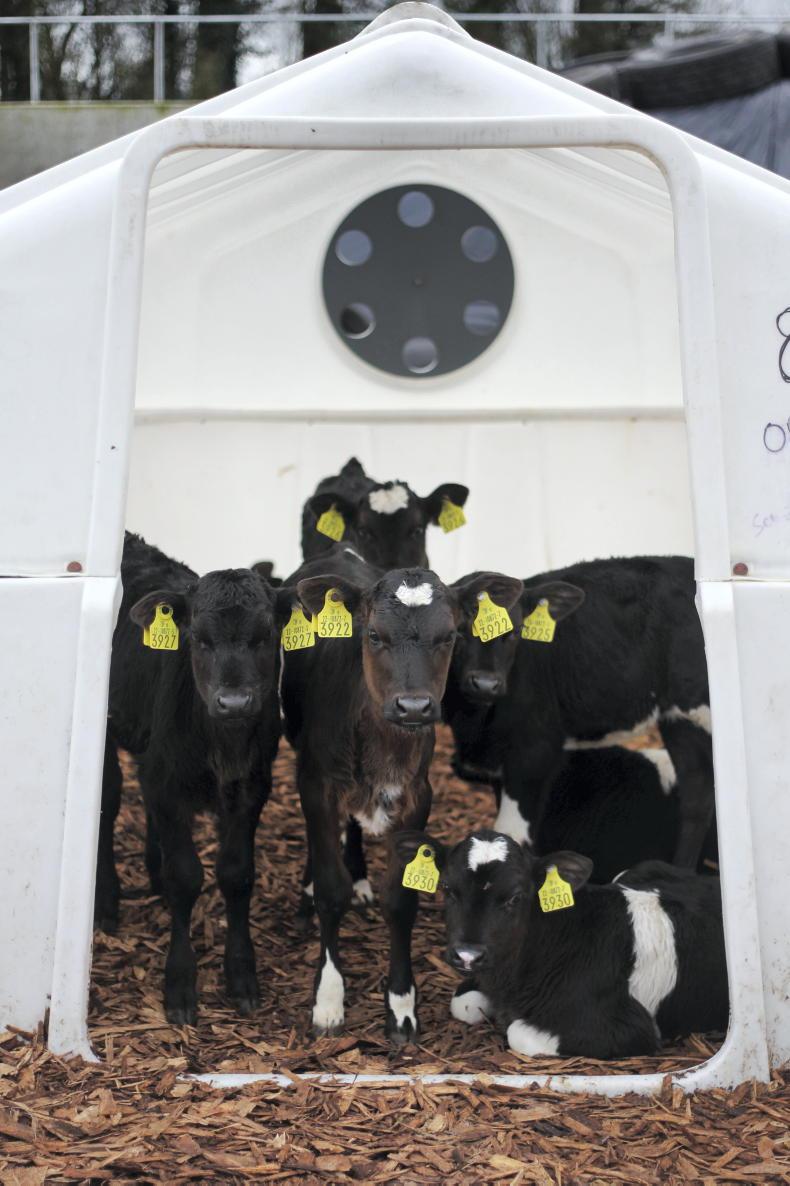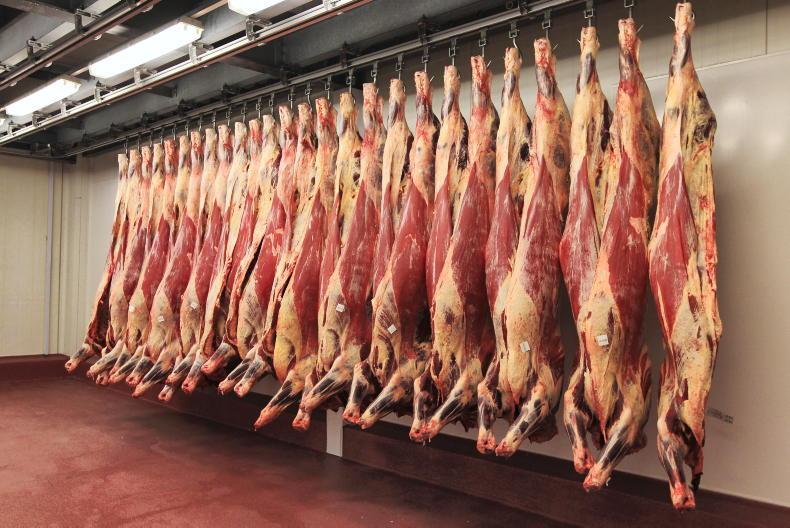Almost 77% of all calf birth registrations for the first nine months of 2021 have taken place online. This is an increase of almost 4% on 2020 levels, with a similar rate of change in registration practices recorded in previous years, as demonstrated in Figure 1.
The increase in online registrations is being underpinned by a number of factors.
Automatic error checks, such as highlighting if a calf is aged in excess of the 27-day timeline for registering and checks on dam and sire details are two of a number of useful advantages said to be encouraging more farmers to switch to online registrations.

Over 75% of calf birth registrations are now completed online.
An increase in the number of smartphones present on farms, along with greater use of farm software packages such as the free Calf-Reg app, which is provided by the Department of Agriculture, is driving growth in this area. This is due to the fact that calves can be registered instantaneously.
Continued expansion in dairying is the other significant factor driving an increase in online registrations, with most large scale herds taking advantage of the efficiency gains.
Calf-Reg app
The Calf-Reg app was launched a little over a year ago and is linked to a farmer’s agfood.ie account. It gives access solely to the calf birth registration function. The registration facility can be accessed offline, allowing calf birth registration information to be recorded directly from the shed or yard without internet access, with this information then automatically submitted when you gain internet access.
The app has robust security checks similar to accessing your agfood.ie account, but there is a facility available to create a four digit pin which can be used for 14 days to gain quicker access.
The following is a summary of the main functions of Calf-Reg;
Create, save and submit calf registrations directly to the Animal Identification and Movement (AIM), including recording of information such as genetic dam, sire tag number, AI code and calving difficulty information.View registrations, including those not sent, awaiting registration and recent registrations that have been completed in the last 30 days.Stored data allows you to view the tag number, date of birth and breed of all female animals in your herd, along with all unused tags currently available to you.February birth registrations exceed 700,000 head for first time
Calf birth registrations exceeded 700,000 head in February 2021, reflecting continued growth in the national dairy herd and a sustained drive from farmers to tighten their calving spread.
This is also reflected in January 2021 calf birth registrations increasing by 26,023 head to 250,224, while March registrations were broadly similar and birth registrations reduced by 18,987 head and 6,400 head in April and May respectively.
Figure 3 details the trends in birth registrations published by the Department of Agriculture up to the end of September 2021. The figures also give a breakdown of birth registrations by sire type.
There were 1,460,821 calves sired by a beef bull in the first nine months of 2021 and 799,387 calves sired by a dairy bull.
The corresponding figures for 2020 are 1,467,277 calves sired by a beef bull and 757,967 calves by a dairy bull. The increase in dairy sire usage relative to beef sire usage has increased in the last couple of years.
Previously, beef sire usage had increased following a period of substantial growth in the dairy herd pre and post the abolition of quotas.

Approximately 249,500 head of cattle from a total kill of 1.25m head for the first nine months of 2021 have been produced on farms termed as controlled finishing units.
The weekly calf birth registration data published by ICBF shows total calf registrations at 2,356,644 up to the week ending 26 November. This is an increase of 40,771 head on the corresponding period in 2020. Note that these figures are provisional and subject to change due to the 27-day timeframe farmers have to register calves.
Dairy birth registrations of 1,543,157 head are running 55,057 head higher while beef birth registrations to beef dams are running 14,286 head lower at 813,487 head.
20% of 2021 beef kill produced in controlled finishing units
Approximately 249,500 head of cattle from a total kill of 1.25m head for the first nine months of 2021 have been produced on farms termed as controlled finishing units.
This translates to about 20% of the kill for that period, which is significantly above the corresponding figure of 16% for 2020. The lower kill in 2021 is inflating the percentage figure, but leaving this aside, the actual figures are significantly higher.
As Figure 2 shows, throughput of cattle from controlled finishing units in the first quarter of the year was similar to 2020 and 2019 and has been running significantly ahead of 2020 levels since then.
If throughput remains above normal from October through to December, it will be the first time that it will break through the 300,000 head mark.
The Department of Agriculture defines certain herds as controlled finishing units in the context of the Bovine TB Eradication Programme. These units are subject to enhanced biosecurity measures as part of the TB Eradication Programme and can only sell direct to slaughter.
Almost 77% of all calf birth registrations for the first nine months of 2021 have taken place online. This is an increase of almost 4% on 2020 levels, with a similar rate of change in registration practices recorded in previous years, as demonstrated in Figure 1.
The increase in online registrations is being underpinned by a number of factors.
Automatic error checks, such as highlighting if a calf is aged in excess of the 27-day timeline for registering and checks on dam and sire details are two of a number of useful advantages said to be encouraging more farmers to switch to online registrations.

Over 75% of calf birth registrations are now completed online.
An increase in the number of smartphones present on farms, along with greater use of farm software packages such as the free Calf-Reg app, which is provided by the Department of Agriculture, is driving growth in this area. This is due to the fact that calves can be registered instantaneously.
Continued expansion in dairying is the other significant factor driving an increase in online registrations, with most large scale herds taking advantage of the efficiency gains.
Calf-Reg app
The Calf-Reg app was launched a little over a year ago and is linked to a farmer’s agfood.ie account. It gives access solely to the calf birth registration function. The registration facility can be accessed offline, allowing calf birth registration information to be recorded directly from the shed or yard without internet access, with this information then automatically submitted when you gain internet access.
The app has robust security checks similar to accessing your agfood.ie account, but there is a facility available to create a four digit pin which can be used for 14 days to gain quicker access.
The following is a summary of the main functions of Calf-Reg;
Create, save and submit calf registrations directly to the Animal Identification and Movement (AIM), including recording of information such as genetic dam, sire tag number, AI code and calving difficulty information.View registrations, including those not sent, awaiting registration and recent registrations that have been completed in the last 30 days.Stored data allows you to view the tag number, date of birth and breed of all female animals in your herd, along with all unused tags currently available to you.February birth registrations exceed 700,000 head for first time
Calf birth registrations exceeded 700,000 head in February 2021, reflecting continued growth in the national dairy herd and a sustained drive from farmers to tighten their calving spread.
This is also reflected in January 2021 calf birth registrations increasing by 26,023 head to 250,224, while March registrations were broadly similar and birth registrations reduced by 18,987 head and 6,400 head in April and May respectively.
Figure 3 details the trends in birth registrations published by the Department of Agriculture up to the end of September 2021. The figures also give a breakdown of birth registrations by sire type.
There were 1,460,821 calves sired by a beef bull in the first nine months of 2021 and 799,387 calves sired by a dairy bull.
The corresponding figures for 2020 are 1,467,277 calves sired by a beef bull and 757,967 calves by a dairy bull. The increase in dairy sire usage relative to beef sire usage has increased in the last couple of years.
Previously, beef sire usage had increased following a period of substantial growth in the dairy herd pre and post the abolition of quotas.

Approximately 249,500 head of cattle from a total kill of 1.25m head for the first nine months of 2021 have been produced on farms termed as controlled finishing units.
The weekly calf birth registration data published by ICBF shows total calf registrations at 2,356,644 up to the week ending 26 November. This is an increase of 40,771 head on the corresponding period in 2020. Note that these figures are provisional and subject to change due to the 27-day timeframe farmers have to register calves.
Dairy birth registrations of 1,543,157 head are running 55,057 head higher while beef birth registrations to beef dams are running 14,286 head lower at 813,487 head.
20% of 2021 beef kill produced in controlled finishing units
Approximately 249,500 head of cattle from a total kill of 1.25m head for the first nine months of 2021 have been produced on farms termed as controlled finishing units.
This translates to about 20% of the kill for that period, which is significantly above the corresponding figure of 16% for 2020. The lower kill in 2021 is inflating the percentage figure, but leaving this aside, the actual figures are significantly higher.
As Figure 2 shows, throughput of cattle from controlled finishing units in the first quarter of the year was similar to 2020 and 2019 and has been running significantly ahead of 2020 levels since then.
If throughput remains above normal from October through to December, it will be the first time that it will break through the 300,000 head mark.
The Department of Agriculture defines certain herds as controlled finishing units in the context of the Bovine TB Eradication Programme. These units are subject to enhanced biosecurity measures as part of the TB Eradication Programme and can only sell direct to slaughter.








 This is a subscriber-only article
This is a subscriber-only article











SHARING OPTIONS: